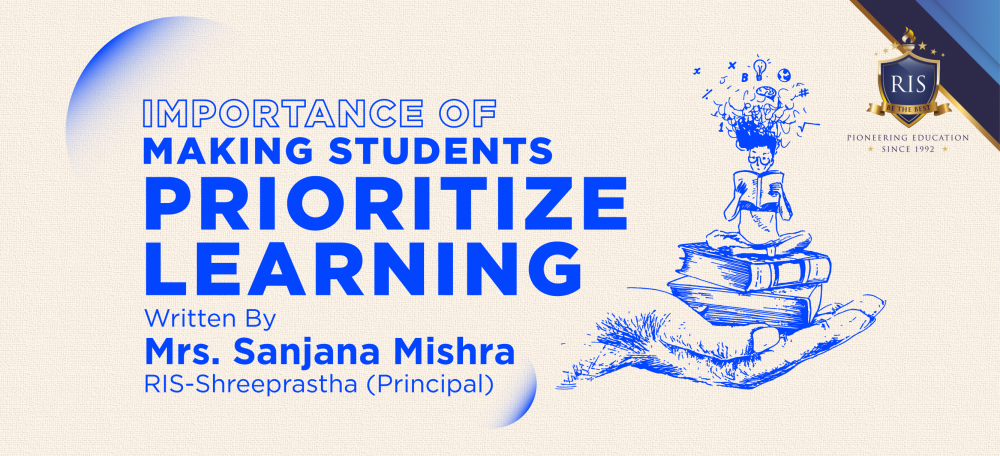Growing up is never easy. Kids are thrust into our complex world and are expected to learn, grow and meet societal expectations. Coping with academic stress, navigating relationships, understanding their identity, gender, and sexuality, managing emotions, fitting in with their peers, and struggling with body image is just the tip of the iceberg. It’s no wonder many young adults often develop mental health issues like depression and anxiety, and have difficulty learning and achieving milestones in school. Now more than ever, parents and educators need to prioritize student well-being — i.e., the physical, social, mental, and emotional state of a child, along with academic learning. Adopting a framework where well-being is
a fundamental component benefits not just students but also teachers and schools.
When a number of different goals are at work simultaneously, an individual’s motivation to pursue some goals may affect both their motivation and ability to pursue others. This is certainly true for students who often (and not always successfully) struggle to balance different goals, which may be academic (e.g., succeeding in their classes, completing double and triple majors), pre-professional (e.g., attending conferences or job fairs), social (e.g., making friends, finding a romantic partner, having fun), and physical (e.g., getting adequate sleep, exercising). Consequently, it is important for instructors to think about how to structure their courses so that students maintain motivation, even when other goals impinge on their time, energy, and attention.
Assign a reasonable amount of work.
While we can reasonably expect students to work hard and prioritize academic work, we also need to recognize that students have other legitimate commitments and needs. As instructors, we should think about how much work is reasonable to assign, first by ensuring that the workload is commensurate
with the unit level of the course. To calculate how long it will take students to read an article or complete an assignment, you can estimate that your students will take three to four times longer to read than it takes you. Another way to calculate out-of-class workload is to ask students how long it took them to do
various assignments, and use this information in future course planning. If the workload we assign is reasonable and achievable, it increases the possibility that students can maintain motivation while balancing multiple goals.
Hold students accountable.
Students are no different from the rest of us in that they will prioritize the work they must do (in order to get the desired outcome, such as a grade) over the work they do not necessarily need to do. Consequently, a good way to motivate students to prioritize work for the course is to link it to an outcome they value, the most obvious being grades. To motivate students to read, for example, some
instructors assign a short, low-stakes reflective writing assignment or administer a brief quiz on reading at the beginning of class. Associating work with grades is not the only way to hold students accountable, however. Social motivations can be powerful, too. For example, if students know they might be called on in front of classmates whose opinions they value, they are more likely to come prepared. They may also put more work into their writing (for example, in discussion board posts on a course website) if they know their classmates will read it. Ideally, whether the stakes for each assignment are socially or grade- based, they should be low enough that students are not penalized excessively for an occasional slip-up, but high enough that students are motivated to keep up with the work.
Highlight the course’s value so students prioritize it.
As students struggle to balance competing goals, they have to prioritize. To motivate students to prioritize the work for the class, it is helpful to clearly demonstrate its value and relevance to their current and future academic goals, their intended professions, and their personal interests. Pointing out these links can be particularly important in courses that are not in the students’ majors. For example, an instructor teaching a basic composition course might specifically discuss the ways in which learning to make a reasoned argument can help students in a wide range of majors and professions. An anthropology instructor might highlight and give examples of ways in which cross-cultural understandings can facilitate better design, engineering, and business solutions. Explicitly pointing out the links between your course material and students' academic, professional, and personal goals can motivate them to prioritize your course despite competing demands on their time and attention.
Give students adequate notice for assignments.
For students to successfully meet a number of different goals, they need to be able to plan the time they will spend achieving them. Thus, it has become the norm for instructors to provide—often as part of the syllabus—a detailed course outline with the due dates for assignments and exam dates. This helps students more effectively schedule and manage competing goals. Because students expect to be able to plan their semesters according to these deadlines, instructors should be aware that if they assign new tasks or change deadlines, students might not be able to give them their full attention. Thus, whenever
possible, you should decide on due dates and let students know in advance when projects, homework, and readings will be due. If you do not know all your assignments in advance, you should at least identify for students the kind of work they should expect at different times in the semester. Moreover, if you
find that you have to make changes during the semester, you should try to give students adequate advance notice so that they can revise their plans accordingly or only make changes that benefit the students—for example, setting later, not sooner, deadlines.











